Loss
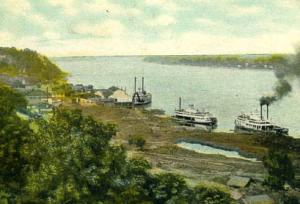 In the year 1840, there was no such thing as the Fujita Scale, so when Natchez, Mississippi was hit by an F4 or F5 tornado on May 7, 1840, nobody knew its exact size, just that it was big…very big. Natchez in 1840 was a typical southern river town, reminiscent of the pre-Civil War days of slave labor and plantation wealth. Many people believed that nothing in their little part of the world could possibly change, and certainly not because of the weather. This was the context into which this tornado was about to enter…screaming violently.
In the year 1840, there was no such thing as the Fujita Scale, so when Natchez, Mississippi was hit by an F4 or F5 tornado on May 7, 1840, nobody knew its exact size, just that it was big…very big. Natchez in 1840 was a typical southern river town, reminiscent of the pre-Civil War days of slave labor and plantation wealth. Many people believed that nothing in their little part of the world could possibly change, and certainly not because of the weather. This was the context into which this tornado was about to enter…screaming violently.
May 7th started out hot and muggy, with overcast skies. The clouds were thick and most of that morning they produced continual rumblings of thunder. One resident recalled that the temperatures were in the mid-60s. Nothing about the day led anyone to believe that they were in eminent danger. And of course, at that time, there were no warning sirens, so the day dragged lazily along. At about 2 pm, the sky darkened so much that candles were needed to finish the mid-day meal that many were eating. The tornado touched down about 20 miles southwest of Natchez and moved in a northeasterly direction. It is believed that the tornado was rain-wrapped, because residence described it as “black masses, some stationary and some whirling” but the storm caused “no particular alarm” amongst the residents of Natchez. Most of the residents who weren’t eating dinner, were working down by the river. Dr Henry Tooley noted that the barometer began to fall rapidly, followed by the rain and then the tornado.
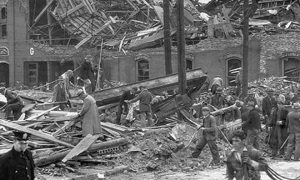
At about 2:10 pm the tornado screamed into Natchez. It lasted about three to five minutes, but the storm itself lasted about 30 minutes before it blew itself out of town. The damage path was about 10 miles long, and was estimated to be between one and two miles wide. For a time, it followed the Mississippi River hitting the southern and eastern edges of the town of Vidalia. Then the tornado crossed the river and continued on into Natchez. The town of Natchez was virtually wiped of the map, and the people on boats on the river were in serious trouble. Most of the boats on the river were flatboats, which were large rafts that carried goods on one-way trips down to New Orleans to be sold. Of the 120 flatboats docked at Natchez, 116 of them sunk. The unofficial estimated death toll was that as many as 200 people drowned after being tossed from their flatboats. It was said that “during the tornado the water rose between 10 and 15 feet, and that the water was whipped to such an extent where even a experienced swimmer could not sustain themselves on the surface.” There were also steamers one of which, The Prairie was ironically filled with a cargo of lead at the time. It sunk, of course. The steamer Hinds was badly damaged but did not sink. Its lifeless remains floated down the river to Baton Rouge where 51 bodies were found aboard.
It was really hard to establish an accurate death count, because most of the people on the river in Natchez 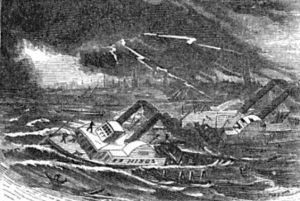 were not from Natchez. Most of the bodies that were found…those which were not lost after they floated out to sea…were unable to be identified because no-one knew who they were or where they came from. Lloyd’s Steamboat Disasters lists the number of lives lost that day at around 4004. In reality, this number was likely way off. This was a significant tornado, however damage also occurred above the river, in Natchez itself. The death toll may have also been skewed because in those days, the slaves were not always counted in census or death tolls. Either way, the Natchez tornado of 1840 ranks as the second most deadly tornado in US history, behind the Tri-State Tornado of 1925.
were not from Natchez. Most of the bodies that were found…those which were not lost after they floated out to sea…were unable to be identified because no-one knew who they were or where they came from. Lloyd’s Steamboat Disasters lists the number of lives lost that day at around 4004. In reality, this number was likely way off. This was a significant tornado, however damage also occurred above the river, in Natchez itself. The death toll may have also been skewed because in those days, the slaves were not always counted in census or death tolls. Either way, the Natchez tornado of 1840 ranks as the second most deadly tornado in US history, behind the Tri-State Tornado of 1925.
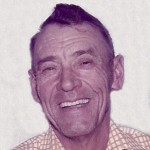 With each passing year, I find it harder to believe that my father-in-law, Walt Schulenberg is no longer with us. He was such a big part of our lives. We always knew that if we needed help with anything, he would be there. He was such a hard working man, and never seemed to give up on something until it was done.
With each passing year, I find it harder to believe that my father-in-law, Walt Schulenberg is no longer with us. He was such a big part of our lives. We always knew that if we needed help with anything, he would be there. He was such a hard working man, and never seemed to give up on something until it was done.
Dad spent many years working at Pathfinder Mines in Shirley Basin before they were set and he left there for other jobs. He was a mechanic by trade and he could fix just about anything that was broken. It didn’t matter if it was a car, truck, or heavy 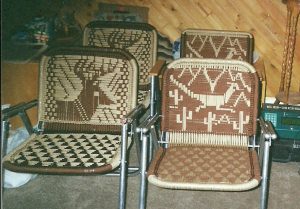 equipment, and even lawnmowers. If it was mechanical, he could handle it. I’m sure the mines owners were sorry to see him go, but the writing was on the wall, and it was time.
equipment, and even lawnmowers. If it was mechanical, he could handle it. I’m sure the mines owners were sorry to see him go, but the writing was on the wall, and it was time.
I think that his retirement years were his favorites though. He loved going down to Yuma, Arizona to escape the cold Wyoming winters. He loved wandering around the desert looking for things like rocks, or any other thing that he might turn into a thing of beauty. Dad was not only mechanically minded, but he had a real knack fir crafts too. Among them were his many gag items, that always seemed to be best sellers at craft fairs. He made 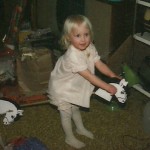 puzzles that people hade to try to disassemble and then try to reassemble. Some of them were quite hard. He also made children’s toys and wind driven whirlybirds. Those things sold well, but I think the thing that he was most famous for was the lawn chairs he rebuilt using colored cords to make a pattern. They sold like hot cakes.
puzzles that people hade to try to disassemble and then try to reassemble. Some of them were quite hard. He also made children’s toys and wind driven whirlybirds. Those things sold well, but I think the thing that he was most famous for was the lawn chairs he rebuilt using colored cords to make a pattern. They sold like hot cakes.
All those were things that people remembered him for, but I will always remember him for his kind heart, his love of family, and especially the little ones. He loved being a dad and grandpa, and of course, husband to his wife of 64 years at his passing, Joann Knox Schulenberg, aka Mom. Dad’s passing left a hole in our lives that we will always feel. We love and miss you Dad, and we can’t wait to see you again in Heaven.
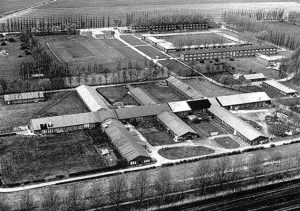 The Neuengamme concentration camp was established in December 1938, and used by the Nazis as a forced labor camp from December 13, 1938 to May 4, 1945, when it was liberated by British troops. At the time of its liberation, about half of the approximately 106,000 Jews held there over time had died. Neuengamme was located on the Elbe river, near Hamburg, Germany. One hundred inmates who were transferred from Sachsenhausen concentration camp, were forced to build the Neuengamme concentration camp. It was established around an empty brickworks in Hamburg-Neuengamme. The bricks produced there were to be used for the “Fuehrer buildings” part of the National Socialists’ redevelopment plans for the river Elbe in Hamburg.
The Neuengamme concentration camp was established in December 1938, and used by the Nazis as a forced labor camp from December 13, 1938 to May 4, 1945, when it was liberated by British troops. At the time of its liberation, about half of the approximately 106,000 Jews held there over time had died. Neuengamme was located on the Elbe river, near Hamburg, Germany. One hundred inmates who were transferred from Sachsenhausen concentration camp, were forced to build the Neuengamme concentration camp. It was established around an empty brickworks in Hamburg-Neuengamme. The bricks produced there were to be used for the “Fuehrer buildings” part of the National Socialists’ redevelopment plans for the river Elbe in Hamburg.
The prisoners worked on the construction of the camp and brickmaking. The bricks were used for regulating the flow of the Dove-Elbe river and the building of a branch canal. The prisoners were also 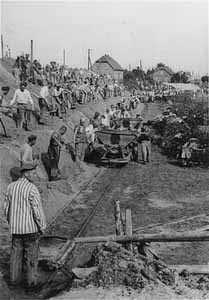 used to mine the clay used to make the bricks. That reminds me of the Jews in Egypt who were forced to build the pyramids. In 1940, the population of the camp was 2,000 prisoners, with a proportion of 80% German inmates among them. Between 1940 and 1945, more than 95,000 prisoners were incarcerated in Neuengamme. On April 10th, 1945, the number of prisoners in the camp itself was 13,500. Over the years that Neuengamme was open, it is estimated that 103,000 to 106,000 people were held there. We may never really know, because they didn’t keep clear records of all the people who went through the camps.
used to mine the clay used to make the bricks. That reminds me of the Jews in Egypt who were forced to build the pyramids. In 1940, the population of the camp was 2,000 prisoners, with a proportion of 80% German inmates among them. Between 1940 and 1945, more than 95,000 prisoners were incarcerated in Neuengamme. On April 10th, 1945, the number of prisoners in the camp itself was 13,500. Over the years that Neuengamme was open, it is estimated that 103,000 to 106,000 people were held there. We may never really know, because they didn’t keep clear records of all the people who went through the camps.
From 1942 on, the inmates were forced to work in the Nazi armament production. At first, the work was performed in the Neuengamme workshops, but soon it was decided to transfer the prisoners to the armaments factories in the surroundings areas. At the end of the war, the prisoners of Neuengamme were spread all over northern Germany. As the Allied troops advanced, hundreds of inmates were forced to dig antitank ditches. In many large north German cities, The prisoners were also require to clear rubble and removed corpses after bombing raids. There were 96 sub-camps, 20 of them for women. In early spring 1945, more than 45,000 inmates were working for the Nazi industry. A third of the women were forced to be among a part of the Nazi 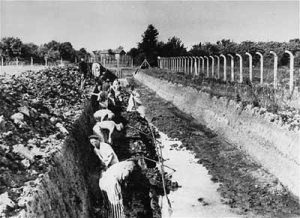 industry workforce. By this time, the internal population of Neuengamme was 13,500, which made it completely overcrowded. The estimated number of victims in Neuengamme is approximately 56,000. Thousands of inmates were hanged, shot, gassed, killed by lethal injection or transferred to the death camps Auschwitz and Majdanek. As the war neared its end, the SS decided to evacuate Neuengamme. They had hoped to avoid having them liberated…probably hoping to regroup further north. This was the start of one of the worst death marches of the war. During these death marches, approximately 10,000 inmates perished by shootings or simply starvation. Nevertheless, the Allies won this war, and then they went in and liberated the prisoners of the many death camp.
industry workforce. By this time, the internal population of Neuengamme was 13,500, which made it completely overcrowded. The estimated number of victims in Neuengamme is approximately 56,000. Thousands of inmates were hanged, shot, gassed, killed by lethal injection or transferred to the death camps Auschwitz and Majdanek. As the war neared its end, the SS decided to evacuate Neuengamme. They had hoped to avoid having them liberated…probably hoping to regroup further north. This was the start of one of the worst death marches of the war. During these death marches, approximately 10,000 inmates perished by shootings or simply starvation. Nevertheless, the Allies won this war, and then they went in and liberated the prisoners of the many death camp.
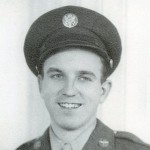
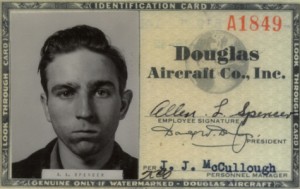 A while back, my sister, Cheryl Masterson and I were talking about our Dad, Allen Spencer’s military training. Like much of Dad’s military service, big discussions about his training days were non-existent. So, I decided to trace his military career, to the best ability I could, and basically take a walk in his footsteps. We knew that he shipped out of Fort Snelling, Minnesota, and then spent time in Salt Lake City, Utah and in Kearney, Nebraska. We weren’t sure exactly where his basic training took place or his training for the B-17. That conversation got my curiosity going, and I decided that I needed to check it out. It’s not always easy to research a persons path through every aspect of their lives, but with the knowledge that he initially started out at Fort Snelling, I hoped to trace the rest of his journey through World War II. Fort Snelling, it turns out was a Reception Center. The men and women started there, received their vaccinations, medical exams, and their gear. They were classified and assigned to a unit. Then they were shipped out for their basic training.
A while back, my sister, Cheryl Masterson and I were talking about our Dad, Allen Spencer’s military training. Like much of Dad’s military service, big discussions about his training days were non-existent. So, I decided to trace his military career, to the best ability I could, and basically take a walk in his footsteps. We knew that he shipped out of Fort Snelling, Minnesota, and then spent time in Salt Lake City, Utah and in Kearney, Nebraska. We weren’t sure exactly where his basic training took place or his training for the B-17. That conversation got my curiosity going, and I decided that I needed to check it out. It’s not always easy to research a persons path through every aspect of their lives, but with the knowledge that he initially started out at Fort Snelling, I hoped to trace the rest of his journey through World War II. Fort Snelling, it turns out was a Reception Center. The men and women started there, received their vaccinations, medical exams, and their gear. They were classified and assigned to a unit. Then they were shipped out for their basic training.
Most of the men in dad’s original unit would go on to become part of the transport or supply teams, but because my dad had a job building airplanes for Douglas Aircraft Company prior to enlisting in the Army Air Force, he was moved to a unit that would spend the war in a B-17G flying Fortress Bomber. For my dad, it was an epic job. He often wrote home to his family about just how amazing the B-17 Bomber was, and how proud 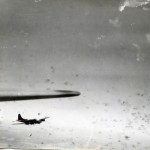
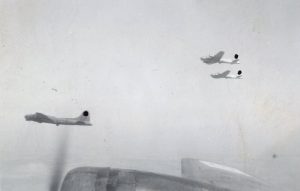 he was to be serving on one. Part of dad’s job was to be the flight engineer, another position that stemmed from his vast knowledge of airplanes. The flight engineer knew the all equipment on the B-17 better than the pilot and any other crew member from the engines to the radio equipment to the armament to the engines to the electrical system and to anything else. Many flight engineers served as maintenance crew chiefs before moving to the position of a B-17 flight engineer. The flight engineer was also the top turret gunner. Dad’s training for his work took him to Miami Beach, Florida, then to Gulfport, Mississippi, and Dyersburg, Tennessee.
he was to be serving on one. Part of dad’s job was to be the flight engineer, another position that stemmed from his vast knowledge of airplanes. The flight engineer knew the all equipment on the B-17 better than the pilot and any other crew member from the engines to the radio equipment to the armament to the engines to the electrical system and to anything else. Many flight engineers served as maintenance crew chiefs before moving to the position of a B-17 flight engineer. The flight engineer was also the top turret gunner. Dad’s training for his work took him to Miami Beach, Florida, then to Gulfport, Mississippi, and Dyersburg, Tennessee.
In Gulfport, Mississippi, dad was trained as a flight airplane mechanic, and it was here that he volunteered to become an aerial gunner as well. He received his wings in November 1943, following gunnery training in Las Vegas, Nevada. Dyersburg Army Air Force Base was the largest combat aircrew training school built during the early war years. It was the only inland B-17 Flying Fortress training base east of the Mississippi River. The base was located on 2,541 acres, not including the practice range. Approximately 7,700 crew men received their last phase training at DAAB. From Dyersburg AAB, dad was sent to Kearney, Nebraska. There he and his crew were assigned a brand new B-17G bomber. Shortly thereafter they flew to New York to be dispatched to their base in the European Theater…Great Ashfield, Suffolk, England. Before arriving there, he wasn’t even sure where he was going, because these things were kept top secret, and were revealed on a need-to-know basis. Based out of Great Ashfield, dad flew 36 missions, one more that the required 35, having volunteered to fill in for a sick 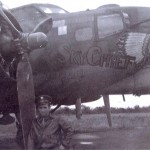
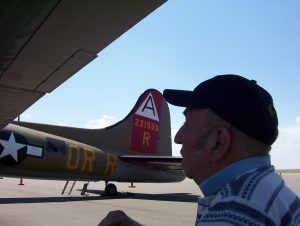 crewmember on the final flight. In one of his letters, he told his family not to worry about him, because as he said, “I’m not afraid of what the near future might bring. I’m going into combat fully confident of my plane, crew, and myself. And I know that with the help of God, I’ll come home again in just as good a condition as I am right now.” And so he did. Today would have been my dad’s 95th birthday. Happy birthday in Heaven Dad. We love and miss you very much and we are so proud of you.
crewmember on the final flight. In one of his letters, he told his family not to worry about him, because as he said, “I’m not afraid of what the near future might bring. I’m going into combat fully confident of my plane, crew, and myself. And I know that with the help of God, I’ll come home again in just as good a condition as I am right now.” And so he did. Today would have been my dad’s 95th birthday. Happy birthday in Heaven Dad. We love and miss you very much and we are so proud of you.
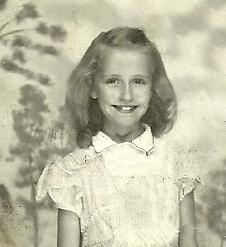 Years ago, my mom, Collene Spencer told me about witnessing a plane crash as a little girl. I wish I had thought to get more information from her then, but at the time, all I could think of was the vision of the crash she told me about, and specifically the airplane in a corkscrew nosedive toward the ground. She said she didn’t hear any engine sounds, and she thought the plane was a piece of paper at first, but then she realized that it was a plane. I didn’t think to ask where she was at the time…whether she was at home or if the family was rock hunting or something. I wish I had asked more questions, back when I had the chance to do so.
Years ago, my mom, Collene Spencer told me about witnessing a plane crash as a little girl. I wish I had thought to get more information from her then, but at the time, all I could think of was the vision of the crash she told me about, and specifically the airplane in a corkscrew nosedive toward the ground. She said she didn’t hear any engine sounds, and she thought the plane was a piece of paper at first, but then she realized that it was a plane. I didn’t think to ask where she was at the time…whether she was at home or if the family was rock hunting or something. I wish I had asked more questions, back when I had the chance to do so.
Rather than asking questions, I began to try to research plane crashes in the area over the years of my mom’s childhood. I had expected it to be an easy search, given all the information on crashes that is out there these days. I was wrong, and by the time I decided that I needed more information from my mom, she was gone. I tried asking my aunts about the crash, but they did not remember it. It’s possible that they didn’t see it, and so they were unable to help me with it.

After much research, I have found possibly the only plane crash my mother could have seen at the age she would have had to be…provided she was close to her childhood home when she witnessed the crash. The crash would have been a B-17 bomber on a training maneuver 25 miles north of Casper, Wyoming. The biggest problem with this crash is the 25 mile distance from Casper, but looking north from Casper, you can see a very long way, provided you are near the events center, which could have been a possibility back then. The distance could also explain the lack of engine noise, if the engines were still working as the plane was going down, which is unlikely.
The plane, which crashed on March 3, 1944 was carrying three officers and five enlisted men. There were no survivors in the crash, which is in line with what my mother told me about the crash. The bomber was on a combat training flight, according to Lieutenant Colonel Marcus A. Mullen, station commandant, who said that 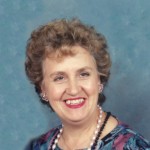 the cause of the crash was not yet determined but that a board of officers had been named to investigate. The dead were later identified as Captain Charles W. Bley of Berkeley, California, Second Lieutenant Eugene E. Ravera of Newton, New Jersey, Second Lieutenant John A. Williams of Morristown, Tennessee, Staff Sergeant Carl E. Cleveland of Sunbury, Ohio, Sergeant George P. Peterson of Perry, Ohio, Sergeant Vernon E. Arne, Stewart, Illinois, Sergeant Duane T. Zefah of Cushing, Minnesota, and Corporal Elmer L. Walters of Pawpaw, Illinois. I can’t say, for sure, that this was the plane crash my mom saw when she was a little girl, but it is noteworthy, and so worth telling about. I know that the crash was something that my mom never forgot, even though she would have only been eight years old at the time.
the cause of the crash was not yet determined but that a board of officers had been named to investigate. The dead were later identified as Captain Charles W. Bley of Berkeley, California, Second Lieutenant Eugene E. Ravera of Newton, New Jersey, Second Lieutenant John A. Williams of Morristown, Tennessee, Staff Sergeant Carl E. Cleveland of Sunbury, Ohio, Sergeant George P. Peterson of Perry, Ohio, Sergeant Vernon E. Arne, Stewart, Illinois, Sergeant Duane T. Zefah of Cushing, Minnesota, and Corporal Elmer L. Walters of Pawpaw, Illinois. I can’t say, for sure, that this was the plane crash my mom saw when she was a little girl, but it is noteworthy, and so worth telling about. I know that the crash was something that my mom never forgot, even though she would have only been eight years old at the time.
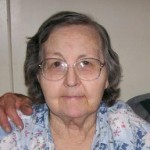
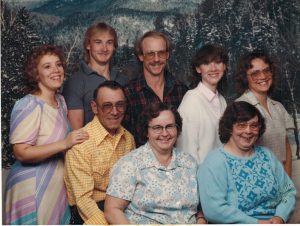 My mother-in-law, Joann Schulenberg, was all about family. She spent her married life as a stay-at-home mom, but that did not mean that she didn’t work. Taking care of six children is simply no picnic. Between cooking meals for everyone, cleaning, canning food, sewing clothes, and knitting things for them, she was a pretty busy lady. My mother-in-law was always the most comfortable raising her children in the country. She felt like it was too much out of her control in town. She worried about the traffic, and the people around, and about the kids running off while playing. She just needed the control of the country to give her peace of mind.
My mother-in-law, Joann Schulenberg, was all about family. She spent her married life as a stay-at-home mom, but that did not mean that she didn’t work. Taking care of six children is simply no picnic. Between cooking meals for everyone, cleaning, canning food, sewing clothes, and knitting things for them, she was a pretty busy lady. My mother-in-law was always the most comfortable raising her children in the country. She felt like it was too much out of her control in town. She worried about the traffic, and the people around, and about the kids running off while playing. She just needed the control of the country to give her peace of mind.
So the family lived in the country for most of the years that the kids were growing up. It wasn’t until 1989 that the family, now of just three at home, moved into Casper to stay. It’s funny that Joann, who had always hated the traffic, the noise, and the activity of city life, suddenly loved to watch the cars go by on the busy street on which they lived. She liked not having to go so far into town for groceries and such. She liked having visitors come by, because suddenly it wasn’t too far for them to go. Like me, she discovered the convenience of city life. Those long drives into town were the first thing I found my self happy to do without. I’m sure my mother-in-law did too…especially on the icy winter roads around here.
By 1996, my mother-in-law became a great grandmother for the first two times. She got a great birthday present in her first great grandchild, Christopher Petersen, who made his grand entrance on her 65th birthday. It was a treat that she had wanted since her mother was also privileged to receive, and never thought she would get. Then the very next day, she god something else she never thought she would get…a Leap Day Great 
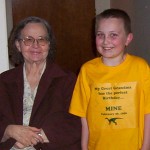 Grandbaby…Shai Royce. Needless to say we were quite busy those two days. She has gone on to have 11 grandchildren, 13 great grandchildren, and 1 great great granddaughter. Her family has sure grown, and while she has never met her great great granddaughter, I know she would love her as much as we all do. She found out about her just days before her passing, and she was very excited about it. I was glad she got to know, because family was always very important to her. Today would have been my mother-in-law’s 88th birthday. Happy birthday in Heaven Mom. We love and miss you very much.
Grandbaby…Shai Royce. Needless to say we were quite busy those two days. She has gone on to have 11 grandchildren, 13 great grandchildren, and 1 great great granddaughter. Her family has sure grown, and while she has never met her great great granddaughter, I know she would love her as much as we all do. She found out about her just days before her passing, and she was very excited about it. I was glad she got to know, because family was always very important to her. Today would have been my mother-in-law’s 88th birthday. Happy birthday in Heaven Mom. We love and miss you very much.
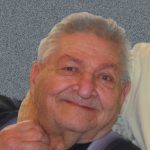 My uncle, Bill Beadle spent much of his working life in the pipe yards. Later, he owned his own rathole drilling business with his sons, Forrest and Steve by his side. While Uncle Bill was a great machinist and general all around mechanic, he really loved fishing and bird hunting in the Worland area with his son, Steve. I’m sure that was also why Uncle Bill was content, in his later years to be living with Steve, his wife, Wanda, and their family. I can imagine they spent a lot pf time talking about their fishing trips, and walking the fields hunting for Pheasant and Chukars. Uncle Bill liked hunting them, because it was so exciting to walk the fields waiting for that unexpected bird to fly up out of nowhere. The hunter had just seconds to respond, and would be successful, only if he was a great hunter.
My uncle, Bill Beadle spent much of his working life in the pipe yards. Later, he owned his own rathole drilling business with his sons, Forrest and Steve by his side. While Uncle Bill was a great machinist and general all around mechanic, he really loved fishing and bird hunting in the Worland area with his son, Steve. I’m sure that was also why Uncle Bill was content, in his later years to be living with Steve, his wife, Wanda, and their family. I can imagine they spent a lot pf time talking about their fishing trips, and walking the fields hunting for Pheasant and Chukars. Uncle Bill liked hunting them, because it was so exciting to walk the fields waiting for that unexpected bird to fly up out of nowhere. The hunter had just seconds to respond, and would be successful, only if he was a great hunter.
Uncle Bill always felt an obligation to try to keep the nephews on the right track, and if they had problems, or it looked like they were heading in the wrong direction, he was sit down with them and after talking to them a while, he could have them turned around and back in line. It was this aspect of Uncle Bill’s personality that endeared him to my cousin, Elmer. Uncle Bill, like many men enjoyed his pipe, for quite a few years, and his chew. That prompted Forrest and Elmer to think that chew was very cool. They got into a big block of chew when they were kids, and didn’t know not to swallow it. So when they were chewing it, they swallowed it, causing them both to turn about three shades of green. While the memory of it makes Elmer cringe, he had no desire to chew tobacco.
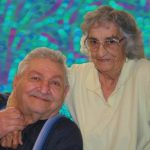 Uncle Bill was a great guy. He always had a way of making the kids laugh. There was always a mischievous twinkle in his eye, and plenty of mischief behind his smile. He loved to tease the kids, and all the kids loved it. Then he would laugh with his infectious laugh, and we all had a thoroughly great time. Uncle Bill was really not serious very much, at least not around most kids. That just wasn’t in his nature, at least not unless the kid was headed for trouble. Then the mood changed right away. He wasn’t mean, just matter of fact, and when all was said and done, the kid knew the right way to go. Uncle Bill was an interesting character, and we loved him. Today would have been Uncle Bill’s 90th birthday. Happy birthday in Heaven, Uncle Bill. We love and miss you very much.
Uncle Bill was a great guy. He always had a way of making the kids laugh. There was always a mischievous twinkle in his eye, and plenty of mischief behind his smile. He loved to tease the kids, and all the kids loved it. Then he would laugh with his infectious laugh, and we all had a thoroughly great time. Uncle Bill was really not serious very much, at least not around most kids. That just wasn’t in his nature, at least not unless the kid was headed for trouble. Then the mood changed right away. He wasn’t mean, just matter of fact, and when all was said and done, the kid knew the right way to go. Uncle Bill was an interesting character, and we loved him. Today would have been Uncle Bill’s 90th birthday. Happy birthday in Heaven, Uncle Bill. We love and miss you very much.

 My niece, Toni Chase has been going through some big changes this year, and that can be hard on people. These were changes that affected Toni; her husband, Dave; and son, James; but especially Toni. James is grown up now, and really isn’t home much, so for Toni, empty nest syndrome has a very real thing…and not one that she is sure she likes very much. In addition, her dog, Bones, who was pretty old, died and that left Toni feeling even more lonely.
My niece, Toni Chase has been going through some big changes this year, and that can be hard on people. These were changes that affected Toni; her husband, Dave; and son, James; but especially Toni. James is grown up now, and really isn’t home much, so for Toni, empty nest syndrome has a very real thing…and not one that she is sure she likes very much. In addition, her dog, Bones, who was pretty old, died and that left Toni feeling even more lonely.
Dave had always had Bichon dogs, and so Toni talked him into getting one. Biscuit soon joined the family, and Toni loves her puppy baby very much, but before long she realized that Biscuit was lonely too, even when she quit her job, and started another one with more flexible hours, so she could be home more. The problem is that James isn’t a little boy anymore, and with her and Dave working, and James busy with his own life, Biscuit was still home alone half of every day.
Toni began to talk to Dave about adopting a dog, which has been something Toni had been thinking about a lot. Dave was not keen on the idea, and in reality, completely unwilling to discuss it. Nevertheless, Dave loves Toni, and wants her to be happy, so when she pursued it, he let her begin the process. And a process it really was. Toni had been looking at rescue dogs for about a month after getting Biscuit, but couldn’t find any in our local area that were young and smaller. To make matters worse, for any surrounding areas, such as Colorado Montana or South Dakota, you had to fill out an application send references and pictures of your house each and every time you saw a dog would become available that you would be interested in. Toni filled out 37 applications and only got two responses back. One response said that her  application was in the top two, but they had picked another family based on the location. The same lady that turned them down, suggested that they try the iRescue website, out of Boulder Colorado, so Toni went on their site and picked several different small young dogs that she would be interested in adopting…again filling out an application for each one, sending pictures of her house, and references for each one. She was a bit stunned when she got a call on one of the dogs they had available. However, it wasn’t a dog that she had shown interest in. The dog that she suggested would be a good fit for their family was a Carne Terrier mix female named Flower. It took only one look for Toni to fall in love, but she still had to talk Dave into wanting her too. Just the night before, Dave had told her to quit looking at rescue dogs, because they weren’t getting another dog. Toni couldn’t get Flower off of her mind, so she downloaded the pathetic little pictures of Flower that were taken when she was captured and being held in a high kill shelter in New Mexico.
application was in the top two, but they had picked another family based on the location. The same lady that turned them down, suggested that they try the iRescue website, out of Boulder Colorado, so Toni went on their site and picked several different small young dogs that she would be interested in adopting…again filling out an application for each one, sending pictures of her house, and references for each one. She was a bit stunned when she got a call on one of the dogs they had available. However, it wasn’t a dog that she had shown interest in. The dog that she suggested would be a good fit for their family was a Carne Terrier mix female named Flower. It took only one look for Toni to fall in love, but she still had to talk Dave into wanting her too. Just the night before, Dave had told her to quit looking at rescue dogs, because they weren’t getting another dog. Toni couldn’t get Flower off of her mind, so she downloaded the pathetic little pictures of Flower that were taken when she was captured and being held in a high kill shelter in New Mexico.
Toni decided to try a different strategy. She sent Dave an email, including the pictures of this poor little dog. She told Dave that she was the number one pick of 37 applicants to rescue this dog who was due to be put down in 48 hours. She explained that they would have to pick her up in Boulder that Saturday…if Dave was agreeable to adopting her, and that in order to adopt her they had to sign a commitment agreement by 5:00 that evening and send the funds within 24 hours of signing the commitment agreement before they would ship her from New Mexico to Boulder. She also explained to him they were little Flower’s last hope.
Toni had planned to give Dave some time, and talk to him at 4:30 to try to persuade him, but Dave responded back with a phone call in less than 5 minutes, saying, “Do you like her?” Toni said, “Yes, and he said okay call her back and tell her that we will come and get her.” He would wire the funds right away. Flower would 
 become Cricket, and she would become theirs. These puppy babies brought nothing but joy to Toni, Dave, and James. And on a side note, James has been spending a bit more time at home too, easing the empty nest syndrome Toni has had.
become Cricket, and she would become theirs. These puppy babies brought nothing but joy to Toni, Dave, and James. And on a side note, James has been spending a bit more time at home too, easing the empty nest syndrome Toni has had.
Funny thing, Dave didn’t want any more dogs…not Biscuit or Cricket at first, but now he loves them just as much as Toni does, and in fact Cricket has turned out to be his sweet little dog, but Toni gets to share, I guess. Today is Toni’s birthday. Happy birthday Toni!! Have a great day!! We love you!!
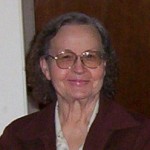
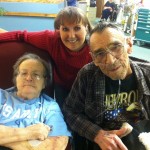 It’s always strange to look back and realize that a loved one has been in Heaven for a year. The subsequent years aren’t as shocking, at least until your reach the milestones like 5, 10, or more. That strange realization is where I find myself today, the one year anniversary on my mother-in-law, Joann Schulenberg’s passing.
It’s always strange to look back and realize that a loved one has been in Heaven for a year. The subsequent years aren’t as shocking, at least until your reach the milestones like 5, 10, or more. That strange realization is where I find myself today, the one year anniversary on my mother-in-law, Joann Schulenberg’s passing.
Over the years, much changed with my mother-in-law. She was, from the time I first met her, a stubborn woman, and I suppose that many people might take that to mean annoying, but she wasn’t. People might disagree with me, but in my opinion, the type of stubbornness that she had is a good form, because it is more of an “if at first you don’t succeed, try, try again” type of stubbornness. In fact, she and I are probably very much alike in our stubbornness, and quite possibly, that is part of the reason we always got along so well. She was a wonderful mother-in-law. My mother-in-law taught herself to master many types of crafts, including quilting, crocheting, knitting, sewing, and canning. These things served her family well over the years. Her crafts proving them with things they needed, and she made money on them too.
As Alzheimer’s began to rob her of much of her recent memory, she became more confused, but I believe that she and we handled it well. She became quite funny. Never one to joke much, she suddenly had a kind of dry humor that I can really relate to. She would surprise me with her quick comebacks, at a time that I thought she didn’t know what was going on, or who I was. Fooled me every time!! Whether she knew she had fooled me, somehow did it on purpose, or simply stated a fact as she saw it at that moment, it was always funny.
In all of the 11 years that I took care of her, my mother-in-law was really a joy to be around, even when she fought with me periodically. The time I spent taking care of her was as rewarding as the time I spent taking care of the rest of the parents. End of life care is really what you make of it. The person is always so grateful to you for your help, and there is a bond with them that will forever change them both. You can’t spent that many hours with your mother-in-law, and not feel a closeness to her. She told me about things in the past, and really enriched my understanding of my husband’s genealogy. She may not have even realized the impact that our conversations had on me, but they were like pure gold. Priceless, and a gift that I will cherish forever. Joann Knox Schulenberg lived a very interesting life, and one that was very different from my own. She was the 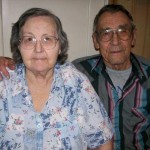
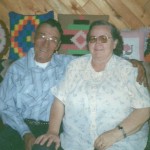 mother of my husband, Bob, and the way she raised her children, enriched my life too. She taught them to be loyal, hard working people, who had self esteem and were respectful to others. She taught them to be kind and helpful to those in need. She raised her family to be close friends, and to share their talents for the good of all. They have always worked together on things. What more could a daughter-in-law ask of her mother-in-law? Mom, most of all, you were a true friend to me, and I miss you very much. I can’t believe that it has already been a year since you left us.
mother of my husband, Bob, and the way she raised her children, enriched my life too. She taught them to be loyal, hard working people, who had self esteem and were respectful to others. She taught them to be kind and helpful to those in need. She raised her family to be close friends, and to share their talents for the good of all. They have always worked together on things. What more could a daughter-in-law ask of her mother-in-law? Mom, most of all, you were a true friend to me, and I miss you very much. I can’t believe that it has already been a year since you left us.

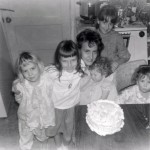 Not everyone can start their new age on the same day as the new year, but my mom, Collene Spencer always could, because she was a New Years Baby. Growing up, it was always normal for our family to have a New Year’s Eve Party. Our dad, Al Spencer was a romantic…at least when it came to Mom. He loved doing things for her, and never really needed any help…not even from his girls, but he did let us help.
Not everyone can start their new age on the same day as the new year, but my mom, Collene Spencer always could, because she was a New Years Baby. Growing up, it was always normal for our family to have a New Year’s Eve Party. Our dad, Al Spencer was a romantic…at least when it came to Mom. He loved doing things for her, and never really needed any help…not even from his girls, but he did let us help.
While being a New Year’s Baby was Mom’s first claim to fame, it was not the thing most people would remember her for. I think that when asked, most people who knew my mom would have to comment on her never-ending love of God. Not only did she love God, but she wanted to share him with anyone who would listen. Mom wanted every person she knew to be in Heaven when they died. She couldn’t bear the thought that the people she knew and loved would spend eternity in Hell. Of course, not everyone understood Mom’s drive, especially her own girls. We all wanted her not to be so “pushy” when it came to spreading the Gospel. Talking to many people after her passing, we can now see that Mom made an impact. She really did. We were the ones who had no idea what we were doing, at least not when it came to spreading the Gospel to people who were genuinely searching for a way to fill the hole in their lives. Mom has an eye for that, where most people don’t.
Mom was always a great mother, who really wanted nothing more than to be a stay at home mom, but when needs arose, she would never leave her precious “Al” to carry that extra load alone. Dad sometimes worked 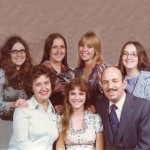
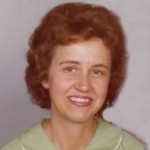 long hours to make ends meet, and when we were young girls, daycare would have cost a lot of money. Then when we were old enough, Mom went to work at Kmart. Mom could run circles around anyone at the store. We would walk over to take breaks with Mom, and we couldn’t keep up with her either. Mom was an amazing woman who always live her life being true to herself, her family, and most of all to her God. Today would have been Mom’s 83rd birthday. Happy birthday in Heaven, Mom. Have an amazing day with all the family who are there, and with Jesus!! We love and miss you every day!!
long hours to make ends meet, and when we were young girls, daycare would have cost a lot of money. Then when we were old enough, Mom went to work at Kmart. Mom could run circles around anyone at the store. We would walk over to take breaks with Mom, and we couldn’t keep up with her either. Mom was an amazing woman who always live her life being true to herself, her family, and most of all to her God. Today would have been Mom’s 83rd birthday. Happy birthday in Heaven, Mom. Have an amazing day with all the family who are there, and with Jesus!! We love and miss you every day!!

